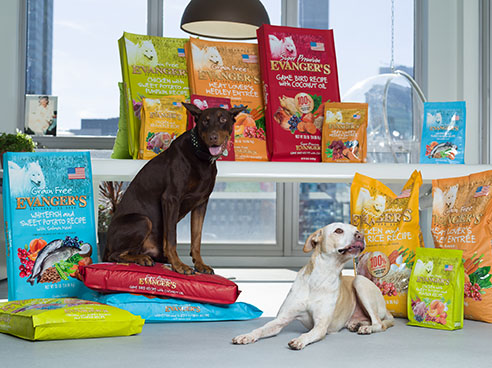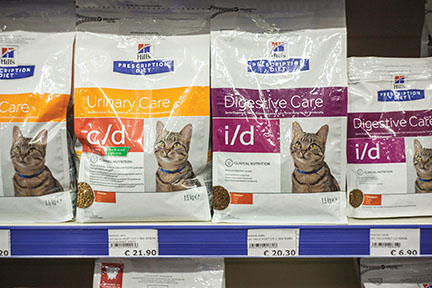This article was published in the November 2023 issue of Pet Food Processing. Read it and other articles from this issue in our November digital edition.
The increasing popularity of pet ownership has sparked a surge in demand for pet food products. As a result, the need for diverse and high-quality pet foods has reached unprecedented levels worldwide. While this creates vast opportunities for pet food processors, venturing into global markets comes with its own set of challenges.
“Entering an international pet food market requires a comprehensive understanding of trends, regulations and market conditions,” said Reece Croucher, vice president, group sales operations, digitalization and sustainability, DKSH, Zurich, Switzerland. “Successful market entry often involves meticulous planning, market research, quality control and a flexible approach to adapt to the unique demands of each market.”
The global pet food market has varied rules across countries, making it a complex field to navigate.
“When it comes to international pet food trade, processors must be acutely aware of market-specific regulatory and certification requirements such as import permits, marketing, labeling and ingredient restrictions. These requirements can significantly impact market access and product compliance,” Croucher added. “Furthermore, understanding the intricacies of customs duties and taxes is vital, as variations in these factors can have a significant effect on different factors such as pricing.”
Regulatory obstacles
One of the most significant challenges faced by pet food companies is navigating the varying regulations and requirements across different countries.
“Different countries have varying regulations regarding the ingredients allowed in pet food, which requires a clear understanding of what those requirements are for each market one is seeking to access,” said Gina Tumbarello, senior director of global strategies, policy and trade, the American Feed Industry Association (AFIA), Arlington, Va. “However, unclear or unnecessary regulatory barriers are oftentimes rooted more in politics than science.”
One example of these challenges is the US-China trade relationship, which has been characterized by complexities and evolving regulatory frameworks over the past decade. This has caused disruptions in the pet food market, impacting both manufacturers and consumers.

To succeed in international markets, Evanger’s pays close attention to different consumer preferences.
|“Before 2020, China restricted US pet food with poultry and ruminant ingredients, which forced US pet food manufacturers to make costly decisions about whether to reformulate their pet food and treats or lose out in this burgeoning marketplace,” Tumbarello said. “By highlighting these challenges with the US government, the AFIA worked with the Office of the US Trade Representative to lift these restrictions through the US-China Phase One Agreement.”
Another example of a stringent regulatory environment is the European Union. It has a complex system of approval and registration for pet food products, designed to ensure the highest standards of hygiene, safety and quality. This can be a major barrier to entry for non-EU manufacturers seeking to access the European market.
“The European Union’s pet food is governed by regulation 1831/2003. It regulates the additives permitted in animal feed, and as applicable, their maximum limits,” said Holly Sher, president and owner of Evanger’s, Markham, Ill. “There are others addressing grain-free, organic, natural product claims that must meet stringent regulatory requirements.”
Global pet food preferences
Understanding diverse consumer preferences is another pivotal aspect for pet food manufacturers aiming for global reach. Factors like cultural practices, economic growth and religious beliefs not only influence consumer choices, but also guide the development and marketing strategies of pet food products in different parts of the world.
“Consumer preferences for pet food can differ significantly based on factors such as cultural norms, dietary trends, price sensitivity and pet ownership habits,” Croucher said. “For example, the requirements for Halal food play a significant role in the Malaysian market as many Muslim pet owners prefer to feed their pets Halal-certified pet food to ensure that it complies with their religious beliefs.”

There are a number of strict guidelines that must be met before US pet food manufacturers can sell their products in the European Union.
|The rise of the middle class in developing countries has also contributed to the growth of pet ownership and demand for high-quality pet food products. This trend is particularly evident in Asian countries like Vietnam, where a growing number of affluent consumers are seeking premium pet food options for their pets.
“AFIA’s global policy team has been focusing on Vietnam as a country of interest, given the country has the fastest growing middle class across Asia, currently at 33 million,” Tumbarello said. “Rising disposable incomes and pet owners switching from feeding unprepared food to prepared dog and cat food is leading to these dynamic increases in the growth of dog and cat food consumption in Vietnam. Another strong driver is an increasingly strong movement within Vietnam to protect animals, so the AFIA views Vietnam as a potential opportunity to reach a new consumer base that is interested in promoting good nutrition and health for their pets.”
Ensuring export safety
The health and safety of animal-based products crossing international borders is a top priority for both regulators and manufacturers. The Animal and Plant Health Inspection Service (APHIS) within the US Department of Agriculture (USDA) is responsible for regulating animal-based products and ensuring they meet the requirements of importing countries.
“APHIS uses an export certificate for all animal-based products, the Veterinary Services Form 16-4, which allows US exporters to verify that their products are free of certain animal diseases not currently present within the United States,” Tumbarello explained. “The AFIA is currently working with APHIS to review all country-by-country, product-by-product export certificates to remove diseases not relevant to those products. For example, if a pet food only contained poultry products and the US broke with a foreign animal disease related to swine only, that pet food should be able to still be exported under this renegotiated certificate.”
Aside from APHIS, there are multiple domestic and international organizations that provide assistance in determining the safety and quality of animal-based products for export. Pet food manufacturers must work closely with these organizations to ensure their products meet the necessary standards and regulations of their target markets.
“APHIS, as well as a host of other domestic and international institutions, provide assistance in determining country-specific regulatory and/or certification requirements, like the Pet Food Institute, AFIA, American Pet Products Association, World Pet Association, Pet Industry Joint Advisory Council, Food Processing Suppliers Association, etc.,” Sher said. “In addition to published requirements, others may be mandated ad hoc because of an unexpected circumstance. For example, a dioxin statement may be required suddenly, although the products are already in transit. Exports are always a challenge.”
Logistical challenges
Besides regulatory and safety concerns and adapting to global pet food preferences, companies also face logistical challenges when exporting their products. This includes navigating complex shipping and handling procedures, as well as dealing with potential delays and unforeseen issues at customs.
“Distributing pet food internationally presents logistical challenges such as transportation, storage, customs clearance, and maintaining product quality during long journeys,” Croucher said. “This is where DKSH Malaysia plays an important role for our clients like Hill’s Pet Nutrition Asia Limited. Its experts provide a range of Market Expansion Services across the value chain, ranging from importation and customs clearance to marketing and sales, distribution and logistics, field merchandising and promoter services, and other value-added services.”
“Entering an international pet food market requires a comprehensive understanding of trends, regulations and market conditions,” said Reece Croucher, DKSH.
Supply chain disruptions, particularly during political unrest, have emerged as a predominant concern for many industries, including the pet food sector. The intricate web of international trade, which sees goods, raw materials, and essential ingredients shuttled between countries, often becomes vulnerable during geopolitical tensions.
“One of our biggest challenges currently is maintaining a steady, stable flow of goods amid political upheaval and supply chain disruptions,” Tumbarello said. “Our members are also concerned about relying too heavily on certain countries for ingredients. For example, while the United States exports pet food at a value of $2.5 billion annually, we rely on vitamins, minerals and other essential ingredients from other countries. Currently, the AFIA is working to raise awareness that our vitamin supply chain is critical and that any spats with trading partners, namely China, could threaten the supply of this vital nutrient used in pet food.”
Leveraging local expertise
Breaking into international markets requires more than just quality products. With their deep understanding of cultural nuances, regulatory challenges and consumer behaviors, local partners are key to ensuring successful market entry and sustained growth.
“Different countries have varying regulations regarding the ingredients allowed in pet food, which requires a clear understanding of what those requirements are for each market one is seeking to access,” said Gina Tumbarello, American Feed Industry Association.
“The local partner is the key to it all, as establishing company-owned offices overseas is economically irresponsible in most cases,” Sher explained. “Therefore, everyone is searching for country-specific or supraregional distributors who are industry-experienced, respected and logistically established in addition to being financially sound and committed to succeeding with a new brand.”
One challenge for pet food manufacturers in finding suitable local partners is the competitive landscape dominated by large, well-established players. This often leaves smaller companies with limited options for partnerships. However, success is still achievable with the right strategy and approach.
“Long-term success with a third, fourth, or even fifth-tier partnership is possible,” Sher said. “Initially, it requires considerable time and financial investments through frequent personal visits, price concessions, and promotional support at or near break-even points. The effective utilization of state- and government-sponsored export programs can improve that.”
Read more about pet food and treat processing on our Operations page.



